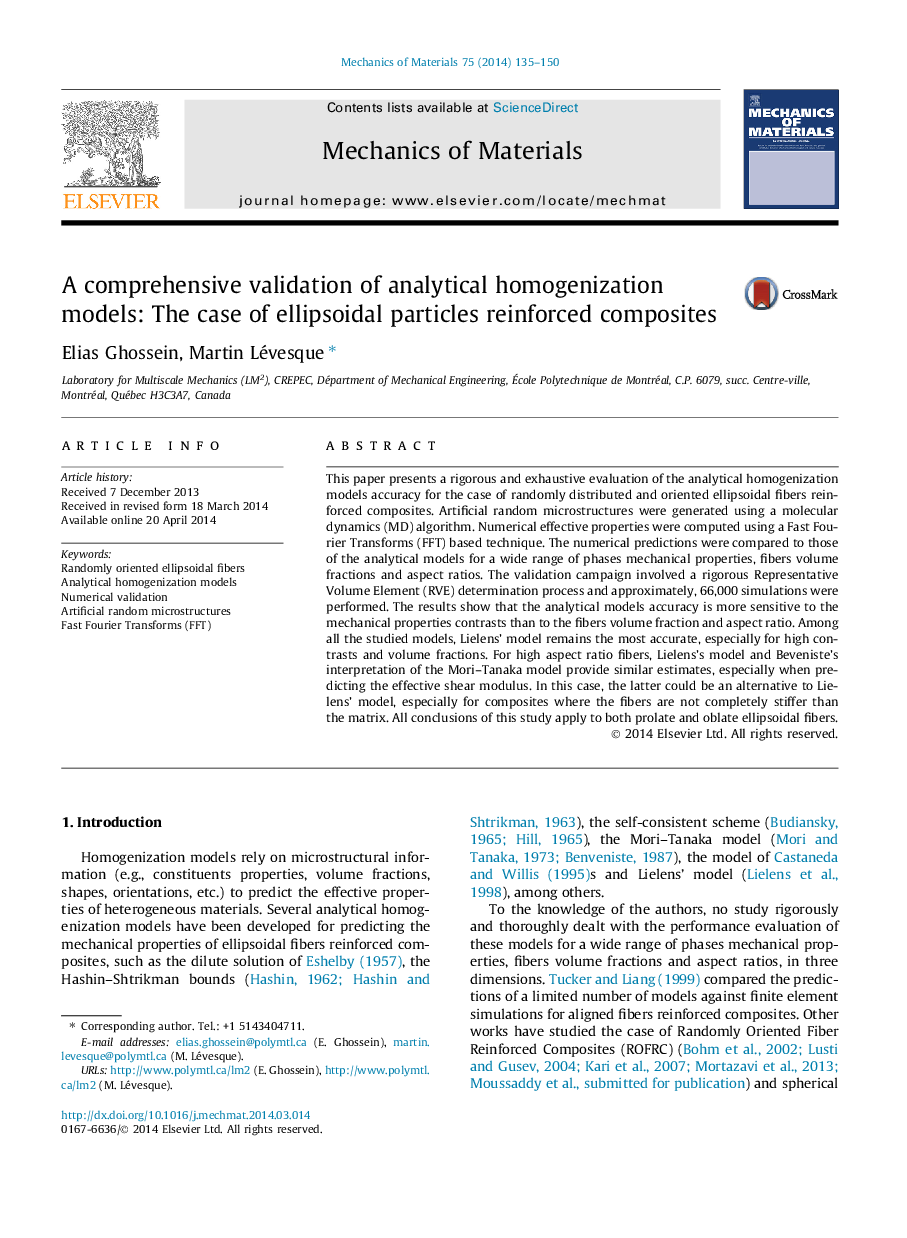| Article ID | Journal | Published Year | Pages | File Type |
|---|---|---|---|---|
| 802800 | Mechanics of Materials | 2014 | 16 Pages |
•The performance of numerous analytical homogenization models was assessed.•A large validation campaign with a rigorous RVE determination process was achieved.•Similar results were obtained for prolate and oblate ellipsoidal particles.•The fiber/matrix contrast is the most influential parameter on the models accuracy.•In the investigated range of properties, Lielens’ model is the most accurate.
This paper presents a rigorous and exhaustive evaluation of the analytical homogenization models accuracy for the case of randomly distributed and oriented ellipsoidal fibers reinforced composites. Artificial random microstructures were generated using a molecular dynamics (MD) algorithm. Numerical effective properties were computed using a Fast Fourier Transforms (FFT) based technique. The numerical predictions were compared to those of the analytical models for a wide range of phases mechanical properties, fibers volume fractions and aspect ratios. The validation campaign involved a rigorous Representative Volume Element (RVE) determination process and approximately, 66,000 simulations were performed. The results show that the analytical models accuracy is more sensitive to the mechanical properties contrasts than to the fibers volume fraction and aspect ratio. Among all the studied models, Lielens’ model remains the most accurate, especially for high contrasts and volume fractions. For high aspect ratio fibers, Lielens’s model and Beveniste’s interpretation of the Mori–Tanaka model provide similar estimates, especially when predicting the effective shear modulus. In this case, the latter could be an alternative to Lielens’ model, especially for composites where the fibers are not completely stiffer than the matrix. All conclusions of this study apply to both prolate and oblate ellipsoidal fibers.
